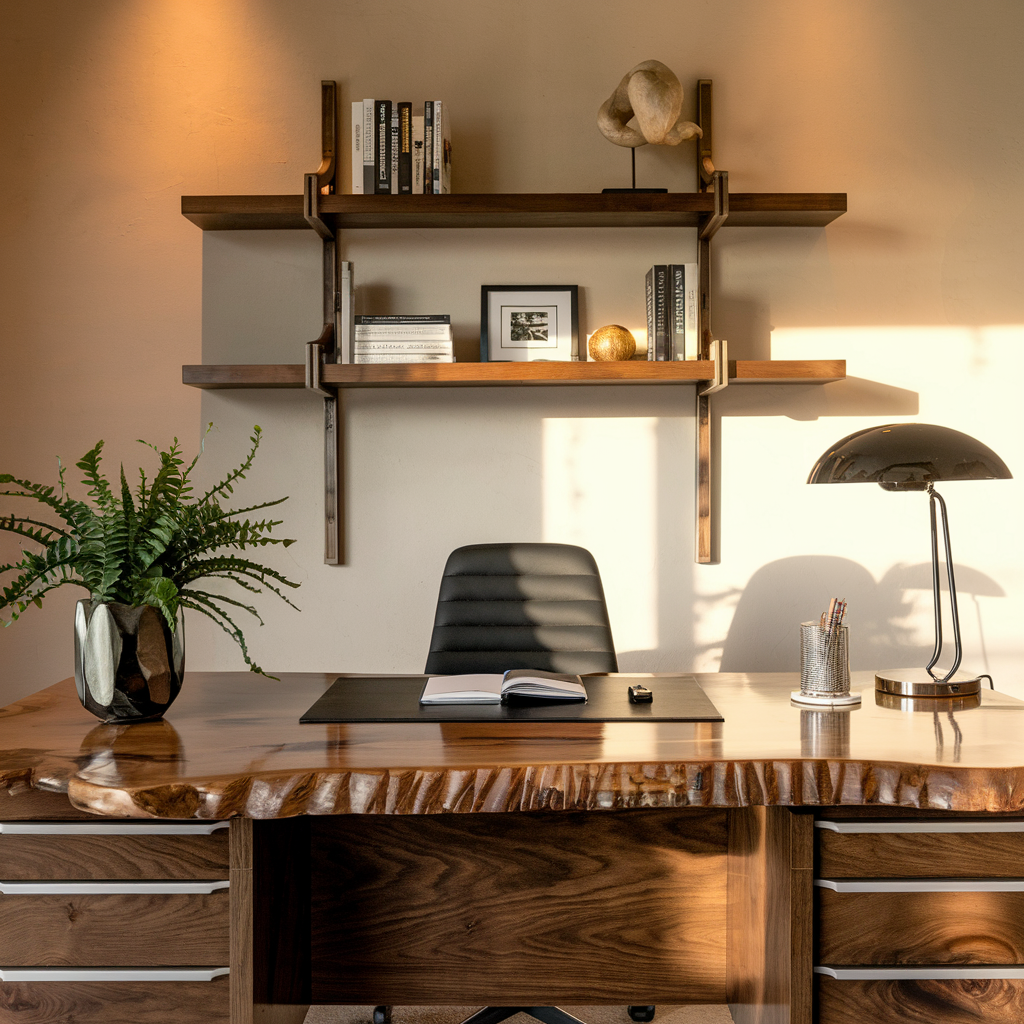The Ultimate Guide to Buying a Solid Wood Office Desk
Investing in a solid wood office desk is a decision that blends form, function, and longevity. Whether you’re furnishing a home office or designing a professional workspace, the right desk plays a crucial role in productivity and aesthetics. In this guide, we’ll walk you through everything you need to know before purchasing a solid wood desk—from material types to size considerations, and styling options to placement tips.
Why Choose a Solid Wood Desk?
Durability and Longevity
Solid wood desks are known for their strength and resilience. Unlike MDF or laminate desks that may deteriorate over time, high-quality hardwood desks can last for decades with proper care. Scratches and dents can often be sanded out or refinished, making them a sustainable long-term choice.
Timeless Style
Whether your office leans traditional, rustic, or modern, solid wood desks add character. Each piece has unique grain patterns that age beautifully over time. From rich mahogany to minimalist oak, wood enhances the professionalism and warmth of your space.
Sustainability
When responsibly sourced, solid wood is a renewable material. Many manufacturers now offer FSC-certified options that align with eco-conscious business values. Buying quality solid wood furniture also helps reduce the environmental impact of cheap, short-lived alternatives.
Discover options in our Desks Collection.
Choosing the Right Wood Type
Hardwoods vs Softwoods
Hardwoods like oak, walnut, maple, and cherry are more durable and resistant to dents, making them ideal for daily use. Softwoods like pine are more affordable but may show wear sooner, which makes them better suited for occasional or decorative use.
Wood Finish and Color
Select a finish that complements your office decor:
- Natural finish for a warm, organic look
- Stained wood for a rich, formal tone
- Painted surfaces for modern or creative settings
Dark walnut or espresso stains create a sense of luxury, while light maple or birch opens up small rooms visually.
For matching accessories, explore filing cabinets in complementary finishes.
Key Size and Layout Considerations
Measure Your Space
Before buying, measure your available space carefully. Consider clearance needs around the desk for chairs and foot traffic. Include distance from walls, doors, and other furniture.
Ideal dimensions:
- Width (W): 47–72 inches (120–180 cm)
- Depth (D): 24–36 inches (60–90 cm)
- Height (H): Standard is 29–30 inches (73–76 cm)
Storage Needs
Decide whether you need:
- Built-in drawers for stationery and devices
- Modular storage underneath for flexibility
- Matching wall shelves for vertical organization or display
Open-leg designs offer more legroom but less storage, while executive desks include more cabinetry for file and supply organization.
Styles of Solid Wood Office Desks
Executive Desks
Large and imposing, often used in private offices. Offers ample surface and built-in storage for multitasking executives or managers.
Writing Desks
Slim and minimalist, best for laptops and light paperwork. Ideal for compact or home offices, and popular for their clean lines and versatility.
L-Shaped and U-Shaped Desks
Provide extra surface area and allow multitasking or dual monitors. Great for corner setups, shared offices, or users who require space for paperwork and digital devices.
Standing Desks with Wood Tops
Combine modern ergonomics with traditional aesthetics. Choose adjustable bases paired with solid wood tops to maintain a natural look while improving posture.
Maintenance Tips for Longevity
Regular Cleaning
Use a soft cloth and avoid harsh chemicals. Wipe spills immediately to prevent staining. A weekly polish with natural wood oil or conditioner keeps the surface protected and enhances its grain.
Protect Against Scratches
Use desk mats or pads, especially under monitors or keyboards. Avoid dragging heavy items across the surface. Use felt pads under desk accessories.
Avoid Direct Sunlight
UV exposure can fade wood over time. Position desks away from windows or use curtains and UV-filtering film to reduce sun damage.
Where to Place Your Desk
Consider Light and Power Sources
Place your desk near power outlets to avoid long extension cords. Natural light improves mood and focus, so placing your desk near a window—while avoiding direct glare—is ideal.
Create a Productive Zone
Minimize distractions by keeping your desk clear of non-work-related items. Keep essentials like printers, desk clusters, or file storage within reach to improve daily efficiency.
Custom Features to Consider
Built-In Cable Management
Desks with built-in grommets and cable trays help organize cords and reduce clutter.
Keyboard Trays and Monitor Stands
Integrated trays or risers can improve ergonomics, especially for desktop users.
Drawer Locks
If you store confidential files or valuable items, consider a desk with locking drawers for added security.
Final Thoughts
Buying a solid wood office desk is an investment in both style and functionality. With thoughtful selection, your desk becomes the centerpiece of your office—enhancing focus, organization, and aesthetics.
By choosing the right size, style, and finish—you create a workspace that supports both your aesthetic goals and daily needs.
At Pnstime.com, we offer a wide selection of handcrafted solid wood office furniture, from timeless executive desks to modern standing options. Our desks are made to last and designed to match your layout and workflow.

